Blueberries are actually perennial shrubs, which means you can plant them once, and have them grow berries year after year, without the plant dying. In fact, some species and varieties can actually live for close to two decades.
That’s a lot of blueberries!
The downside to this is that they will require a little maintenance.
You’ll have to be sure to prune them once they reach age five, and they will require fertilizing and maybe even mulching every spring.
Maintenance aside, these plants are easy to manage, and even make great container plants!
You can grow them indoors or outside, and enjoy a nice harvest of blueberries year after year.
Where to get Blueberry Plants
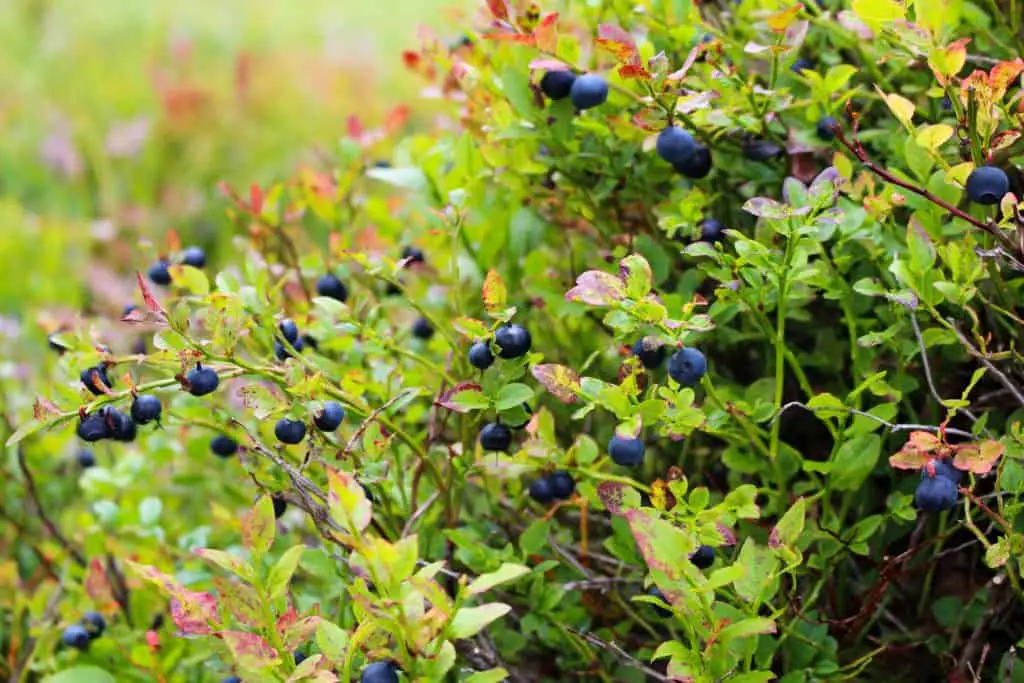
The easiest way to start your blueberry crop is to buy young plants.
You can purchase plants that are anywhere from a year to three years old.
These are great options for growing both indoors and out. Just make sure that you’re paying attention to the health of the plant that you purchase.
When buying in person, get a plant that’s bushy, and has a lot of healthy leaves.
Discoloration on the leaves can indicate a nutrient imbalance, and holes can indicate a previous issue with pests.
Try to avoid plants that have one or both of these indicators.
If a plant has some browning, it’s more likely that the plant has been underwatered, or subjected to too much heat.
Caring for the plant properly, in a comfortable environment, can help restore it.
When buying the plant online, try to stick to sellers or nurseries with good reputations, and even better return policies.
Since the plant has to be transported, it’s likely to suffer. In some cases, you just need to water and care for the plant in order to restore it.
However, there are occasions when the shock is enough that it kills the plant.
In these cases, a good return policy ensures that you’ll be able to get a refund without any serious hassle.
Another option to get a plant is to purchase seeds.
The main downside to this is that it takes a lot of patience. Blueberry plants are slow-growing, and it won’t be until the plants are at least a year old that it starts to be viable.
Still, this is the cheapest method for getting a lot of plants at once.
How to Transplant or Repot Blueberry Plants
Start the transplant process by prepping whatever area you want to move the plant to. This includes preparing the proper soil and loosening it up.
As for the plant itself, you’ll want to make sure that the roots are mostly dry. Moving roots that are covered in wet soil can lead to damage since they’re likely to break under the weight of the soil.
When you’re prepped and the soil is relatively dry, dig up the plant, being careful to preserve the root system.
Expect the root system to be wide and shallow, stretching beyond the base of the plant.
Dig out an appropriate space for the roots in the area that you plan to replant in.
You’ll want there to be enough room for the roots to stretch to their full length, plus extra.
Hold the plant by the base, directly over the area you plant to replant in.
Fill the hole and surrounding area with soil, lightly covering the roots until the soil is level, and the plant is secure.
You don’t want to pack the soil in, let it get compacted and the plant can’t breathe.
Water the plant after transplanting, and fill in any areas that are lacking in soil.
If planting outdoors, keep your blueberries about four to five feet away from one another.
You’ll want to keep them in the same general area though since keeping them together can help them produce a better yield.
In the case of moving young plants outdoors for the first time, you’ll want to plant them as soon after the last frost as possible.
This will give them a full growing season to adjust to their new home.
If growing in a container indoors or outdoors, don’t put multiple plants in one pot.
These plants can get fairly large, so you want to make sure they have plenty of room to themselves.
The Different Blueberry Varieties
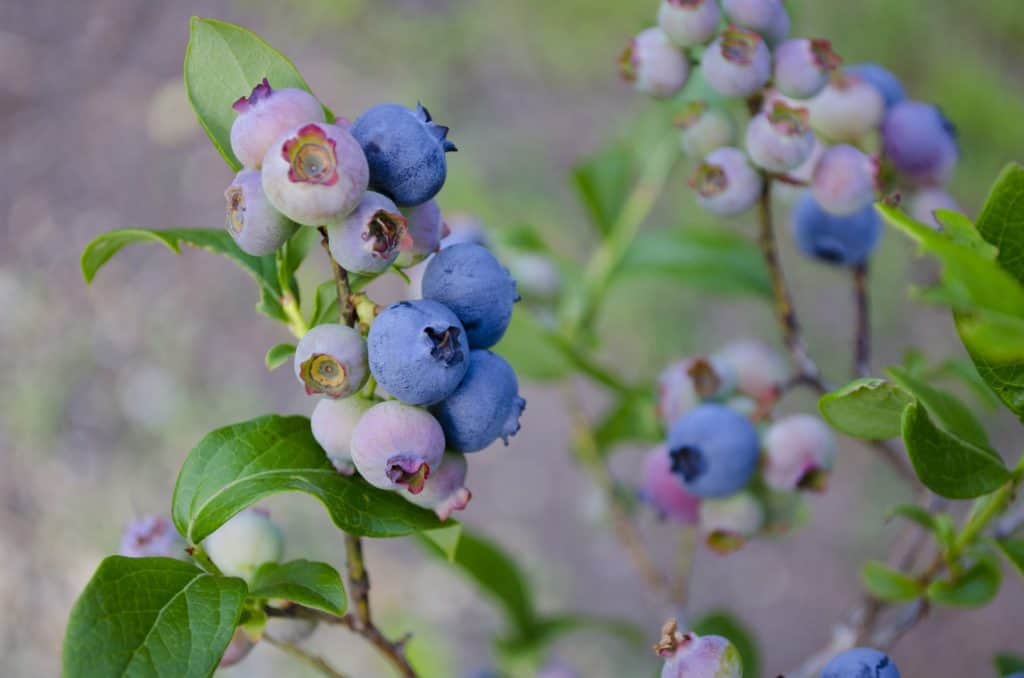
There are so many varieties and types of blueberry plants that your biggest hurdle will be narrowing down your choices to just one.
You’ll want to look for highbush blueberries first and foremost, as this particular species is the one most commonly grown for its fruit.
With this type, there are a number of great varieties available to the home gardener.
Bluecrop berries are going to be close in taste the blueberries that you can get at the grocery store.
For the more adventurous, you can get pink varieties like Pink Lemonade. These have a pretty pink color, as well as a sweeter, somewhat lemony taste.
You may also want to choose a variety based on your climate.
Most blueberries will be happy with around a 140 day long growing season.
If you live in a climate that has more days than this, go for a warm-weather variety.
Choose a hardier, colder tolerant variety for areas that have a shorter growing season.
Half-high blueberries are a good choice for anywhere that falls under hardiness zones 3 or 4.
Luckily, there are varieties that can grow in just about any hardiness zone, so just check the requirements for your area and choose a plant accordingly.
Can Blueberries be Grown Indoors?
Yes, blueberries are a great indoor crop because they’re shade tolerant.
They don’t require as much sunlight as many other plants grown as crops. As such, you can grow them near windows that only receive light for part of the day.
Just keep in mind that the yield will be better on plants that get more sun, so you’ll want to try to give your plant as much sun as possible, without directly exposing it to harsh conditions. The same is true if you’re growing your plants outdoors.
Shoot for anywhere from four to seven hours of sunlight a day, with six being an ideal number.
If you notice that your plant is struggling to flower and produce a good amount of healthy fruit, try moving it to an area that gets more sunlight.
How to Water Your Blueberry Plants
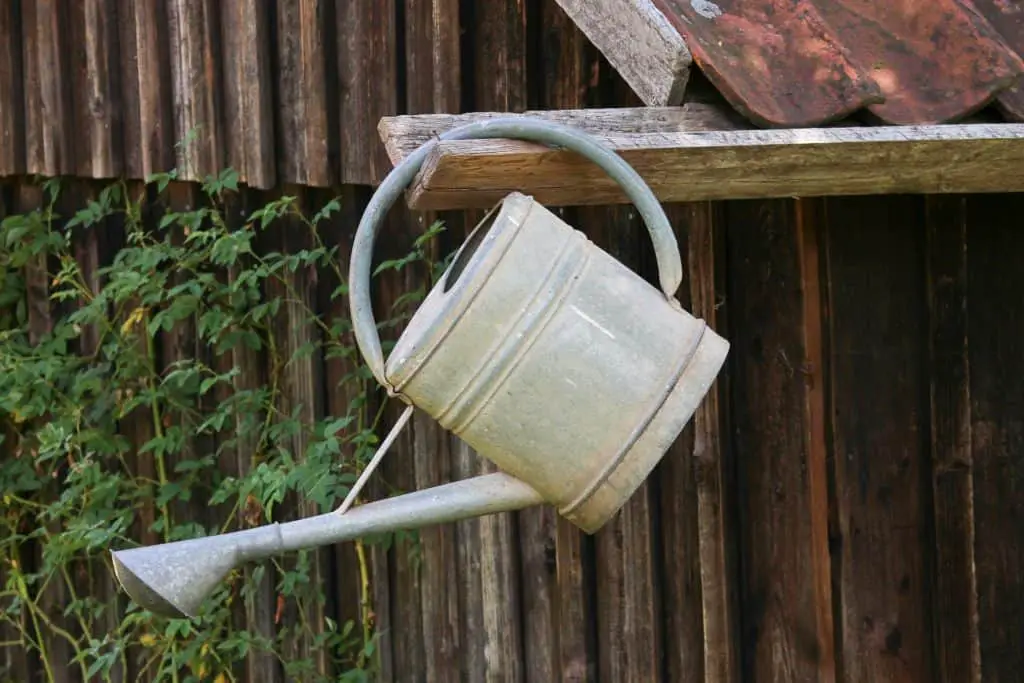
Watering your blueberry plants takes a careful balance. They like moist, frequently watered soil, but they don’t want their roots to be soggy.
Outdoors, this means that you’ll likely be watering your plants every few days.
Indoors, your schedule will depend on a number of factors, including the temperature and humidity of your home, as well as the type of soil mix you used.
In general, you’ll want to wait until the top ½ inch of soil has dried out before watering the plant.
Don’t wait much longer than that, since blueberry plants have shallow root systems.
You’ll be able to tell if the plant is underwatered by watching the soil. If the surface of the soil has been dry for three or more days you’ll need to water the plant.
You may also notice some browning of the leaves.
With shrubs like these, it can be more difficult to tell if the plant is overwatered.
They won’t get as obviously pale and limp, like other species will. Instead, watch out for signs that soil isn’t drying well.
If the surface of the soil stays wet for more than two days, you may need to adjust your watering or your soil mix.
The Best Containers for Blueberries
Despite their bushy nature, blueberries actually have a pretty shallow root system. They don’t need a particularly deep pot in order to grow happily.
However, they are bushes, so you’ll want to get a wide pot that allows plenty of room for the plant to expand outward.
As far as materials, there isn’t any particular material that you must use for blueberries.
Any pot with the right shape and good drainage will work fine. Go for a style that you like, and try to stick to durable materials for outdoor containers.
Plastic is always a great material since it’s lightweight, durable, and cheap to replace.
Concrete, clay, ceramics, and terracotta are generally considered more attractive, however, they are heavy and expensive.
Take a look at your budget and your preferences, and choose a pot that you’ll be happy with long term.
The Best Soil for Blueberries
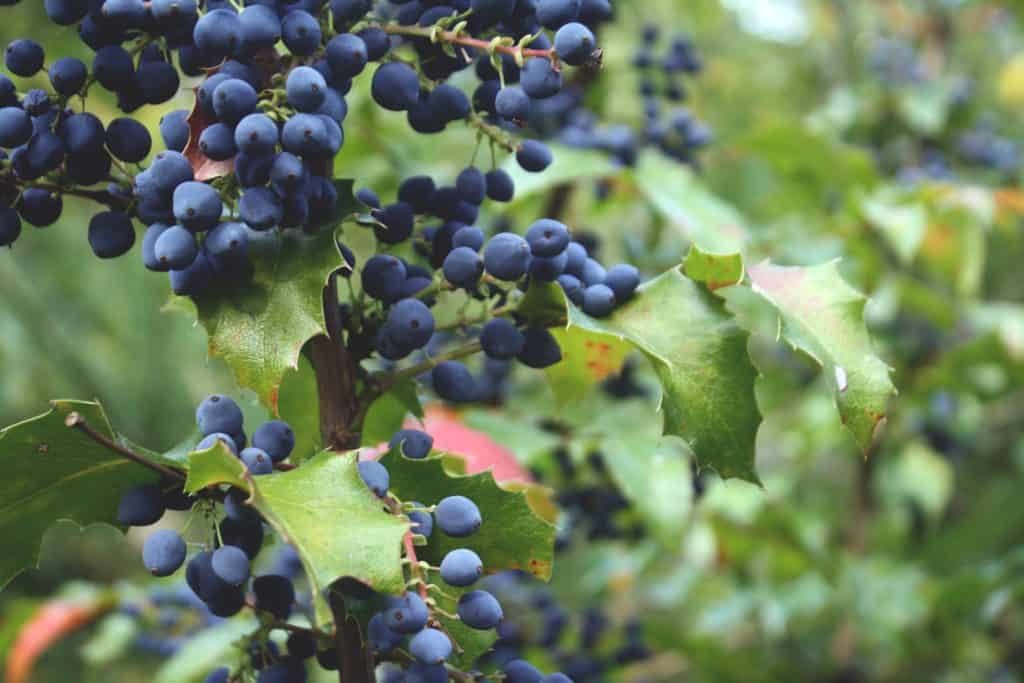
You can grow blueberries in standard potting soil, however, if you want to get the most out of your plants, you may want to make some adjustments.
This will allow you to get a greater yield out of your plants.
The biggest potential issue with using regular soil is that you may encounter some overwatering.
Most readily available potting mixes have perlite or some other substance mixed in, to help keep the soil aerated.
While having air in the soil is great, these materials have the downside of retaining a lot of moisture.
This can be helpful for plants that like moist soil, or if you’re growing in a particularly dry environment, but it’s not always helpful for plants that prefer well-draining soil.
Blueberries, in particular, don’t like soggy soil, or soil that’s always moist.
If you notice that your blueberries are getting easily overwatered, try mixing a bit of sand into the soil.
You don’t want too much, but adding in a bit can help the soil dry out easier, and keep it from getting too compact.
You may also want to consider adding an acidic material to your soil. Blueberries like a slightly lower ph than your average plant; for your plants to be at their happiest, there’s a good chance you’ll have to add in some acidic material to the soil at some point.
Compost and manure will naturally acidify the soil, so if you’re already using one or both of these, you don’t have to do anything extra. You can also consider something like sulfur or peat moss.
Another simpler option is to buy specialized potting soil.
Special soil mixes that are made for flowering bushes like azaleas or rhododendrons are a great alternative to making your own mix.
These plants have a lot of the same requirements as blueberries, so they’re an excellent option for any beginners or people who just don’t want to fuss with making soil mixes.
How to Fertilize Blueberries?
Your standard 10-10-10 fertilizer is fine for blueberries.
They don’t need any particular, or special type of fertilizer, so focus on ones that are designed for fruiting plants.
These fertilizers will help you get a good yield out of your plant, so they’re a better choice.
Choosing between a liquid or granular fertilizer is a matter of personal preference.
Just keep in mind that granular fertilizers are easier to use in some cases. With these, you simply select the amount that you want and sprinkle it over the surface of the soil. You don’t have to worry about diluting it or applying it correctly.
As far as the frequency of application is concerned, pay attention to the directions on the packaging.
Most fertilizers need to be applied sometime around every two months, however, that’s not true for every case.
As long as you are carefully following the recommendations, you should be fine.
You might consider trying this fertilizer on Amazon.
How to Avoid Blueberry Pests
If you’re growing your plant indoors, you can address all the common houseplant pests such as spider mites and mildew with careful application of insecticidal soap or rubbing alcohol.
If you find that fungus gnats are growing in your soil, then just keep some yellow flypaper nearby to catch any mature flies.
Outdoors, your greatest threats will be animals that are interested in tasting the crop for themselves. Birds especially are big fans of blueberry bushes.
In order to protect your plants, you can keep a bird net draped over them. This makes it a little inconvenient to access the plant for weeding, watering, and harvesting, but it’s worth it if you want to protect your yield.
That said, a bird net is not a necessity. If you’re fine with it, then you can let the birds and other animals enjoy the fruits of your labor just as much as you do. The choice is up to you.
How to Harvest Blueberries
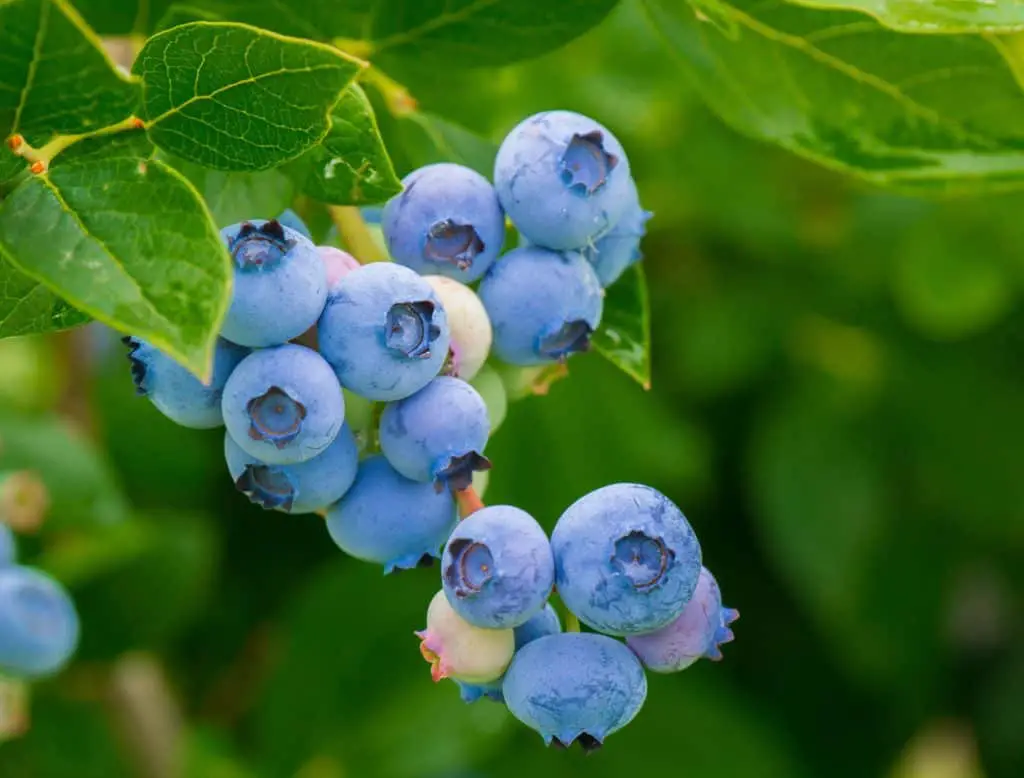
Harvesting your crop is a simple matter of picking blueberries off the bush. The difficult part is waiting for the appropriate timing.
Some plants are ready for harvest as early as March, while others are ready in August. The key is to be patient and wait for the plant to let you know that it’s ready.
Blueberries are best harvested after they’ve turned completely blue (or whatever color is appropriate for the variety you’re growing).
From there, gently grab the berry to see if it’s ripe. A properly ripened berry will easily fall off of the plant and into your hand.
It won’t require any tugging or pulling. If the berries aren’t coming off easily, give them a little more time before you harvest.
Why you Should Grow Blueberries
Blueberry plants have some obvious benefits.
The fruit they produce is delicious, and there are so many fun varieties you can try, depending on your tastes.
Obviously, their main application is as a snack or an ingredient in a number of dishes and tasty desserts.
But blueberries are also great for the health-conscious crowd as well.
They’re perfect for sweetening up smoothies or juices, especially since they have so many antioxidants.
Apart from their functional purposes, blueberry bushes are also a great aesthetic addition to your yard.
Since they’re shrubs, they can be used to fill out any large areas in your landscape. They also happen to produce pretty flowers before they fruit.
So even if you’re not a huge fan of their fruit, you can grow these plants as an easy to care for perennial in your garden.
No matter your intentions, blueberries are an easy, attractive plant to add to your houseplant collection or outdoor landscape.
Purchase a few of these shrubs and expand your gardening potential.
